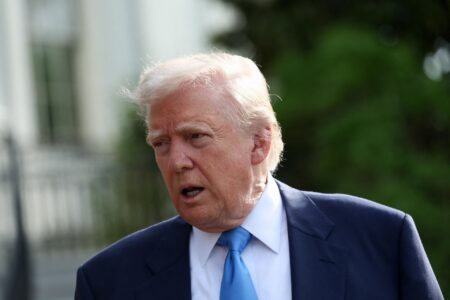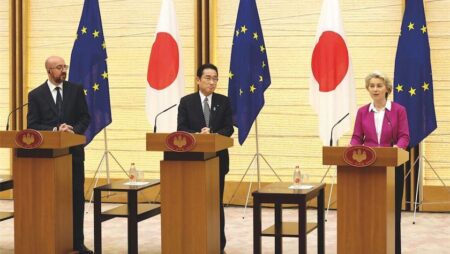Canada’s Upcoming Election: Navigating Trade Challenges Amidst Trump’s Tariffs
As Canada approaches a crucial electoral period, the political arena is increasingly influenced by the ramifications of Donald Trump’s controversial tariffs, which have the potential to alter trade relations between Canada and the United States. With former Bank of England Governor Mark Carney and Conservative leader Pierre Poilievre emerging as frontrunners for leadership,voters are preparing for a high-stakes election that will scrutinize their priorities regarding economic governance and international diplomacy. The candidates’ stances on tariffs and trade are anticipated to be pivotal issues, compelling Canadians to consider how these policies might affect their economy and bilateral ties with the U.S.This election not only represents an opportunity for transformative change within Canada but also highlights broader challenges in an ever-shifting global economic surroundings.
Strategies for Addressing Trade Challenges: Carney vs. Poilievre
Considering rising trade tensions linked to Trump’s tariffs,both Mark Carney and Pierre Poilievre are formulating unique strategies aimed at alleviating negative impacts on Canadian businesses and consumers. Drawing from his extensive background in global finance, Carney advocates for a collaborative approach to trade policy. He emphasizes strengthening alliances with key partners while promoting innovation in green technologies as a means to bolster Canada’s competitive position globally. His strategy encompasses:
- Diversifying export Markets: Expanding access beyond conventional U.S. markets by forging new trade agreements with developing economies.
- Investing in Technological Advancements: Providing grants to support local enterprises focused on research and innovation, thereby reducing reliance on vulnerable sectors.
- Provincial Collaboration: Partnering with provincial leaders to tackle specific regional challenges arising from tariff-related issues.
Conversely,Poilievre adopts a more nationalistic outlook,viewing tariffs as an infringement on Canadian sovereignty that necessitates a strong response. His platform prioritizes domestic industry support through protectionist measures while criticizing current government strategies regarding trade negotiations. He underscores fiscal policies designed to create jobs locally and stimulate investment through initiatives such as:
- Local Manufacturing Incentives: Offering tax reductions for companies that favor Canadian production over imports.
- Simplifying Regulations: Streamlining rules so businesses can more easily adapt during periods of trade disruption.
- A Public Awareness Campaign: Promoting initiatives encouraging Canadians to purchase local products in support of homegrown businesses.
| candidates | Main Focus Areas | Pivotal Policy Highlights |
|---|---|---|
| Mark Carney | Tackling Trade Through Multilateralism | Diversification of Exports; Tech Investments; Provincial Partnerships |
| Pierre Poilievre | Nurturing national Economic Policies | Support for Local Manufacturing; Regulatory Revisions; Public Engagement Campaigns |
Examining Economic Approaches: Protecting Canadian Interests Through Different Lenses
The impending election has brought significant attention towards the economic proposals put forth by both candidates—Carney’s vision focuses on fostering a enduring economy that addresses climate change while driving innovation forward. He believes transitioning towards green technologies will not only shield Canadian interests from external pressures like Trump’s tariffs but also establish Canada as a frontrunner in the evolving global marketplace. Key components of his plan include:
- Boosted investments into renewable energy sources;
- Implementing regulations aimed at lowering carbon emissions;
- Encouraging job creation within green industries;
- Fostering international cooperation concerning environmental matters;
<pConversely, Poilievre champions traditional economic growth methods emphasizing resource extraction alongside infrastructure development initiatives.His strategy revolves around advocating for stronger promotion of Canadian goods while negotiating favorable terms in international agreements that prioritize national interests.Poilievre contends that adopting an assertive stance against tariffs could protect local enterprises whilst invigorating domestic production.Central elements underpinning his economic framework comprise :
- Revisiting trading policies beneficially impacting producers across Canada ;
- augmenting assistance directed toward energy sectors ;
- Diminishing excessive regulatory burdens placed upon businesses ;
- Stimulating private sector investments targeting critical industries .
Public Sentiment Analysis: Voter Perspectives on tariffs Leading Up To The Election Day
The electoral landscape is becoming increasingly significant as public opinion surrounding tariff implications takes center stage among voters.As geopolitical dynamics continue influencing global commerce , Canadians are growing more cognizant about how these imposed duties—especially those enacted during Trump’s administration—could reverberate throughout their economy.Key concerns resonating among constituents include :
- Rising Consumer Costs :
(56% express worries about increased prices affecting everyday items.)
Job Security:(34% fear potential layoffs due reliance upon imports.)
International Relations:(10% divided opinions exist regarding effects tariff policies have upon US-Canada relations.)
The polling results indicate both candidates must address voter concerns related directly tied back towards trading practices if they wish gain broader appeal amongst constituents.as this electoral cycle progresses , discerning voters will evaluate each candidate’s positions concerning tariffs carefully weighing implications stemming from their respective stances—not just domestically but globally too.A recent survey unveiled insights reflecting voter priorities:
| Main Concerns | % Of Voters |
|---|---|
| The rise In Consumer Prices | (56%) |
| Potential Job Losses | (34%) |




